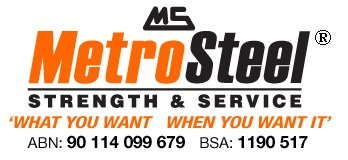Steel is strong, durable, has great ductility and in addition it can easily be welded. This makes it the perfect material for a wide range of equipment, constructions, and parts. However while it is all of these things, it does need a little help in the protection department, especially if it’s going to last. Yet last it can. In fact some of the oldest steel-framed buildings in the world including the Empire State and the Chrysler Building are still standing today some respective 87 and 89 year later.
So what causes corrosion in steel?
In essence it’s an electrochemical process that requires the simultaneous presence of two objects. They are oxygen and moisture. Without these two elements corrosion can’t happen. Corrosion occurs when the iron element in steel oxidises and turns to rust. The rate at which this process happens depends heavily on the surrounding climate – eg moisture levels, humidity etc and cannot be measured in terms of specific years. So with this in mind, how do you go about preventing it?
The good news is that there are a number of processes that will prolong the corrosion process, often by many years. Yet despite the fact that there are numerous varieties of protection they all carry out the same purpose. That is that they form a protective barrier between the elements and the metal itself. Let’s take a closer look at some of them…
Painting
Paint can be applied to steel by means of a brush, roller, air spray or non-air (electrostatic) spray and in the case of powder coating is applied not as a liquid but as a free-flowing dry powder. Under normal circumstances painting involves the use of a primer, intermediate build coats, and finish coats. They are normally applied in a particular sequence to build up layers of protection. The difference with powder coating is that once the powder has been applied it’s then cured under heat to allow it to form a protective skin. Steel paints and powder coatings come in a wide variety of colours and finishes and is the perfect way to add the wow factor to your steel structure.
Hot dip galvanisation
Hot dipping steel has been perfected over many years and involves plunging the steel into a bath of molten zinc. Once coated the zinc alloy forms a metallurgic bond with the substrate layer resulting in a strong protective barrier that’s both tough, durable, and resistant to abrasions.
Thermal spraying
Similarly to paint, thermal spraying involves spraying a compound (in this case zinc and aluminium alloys) over the surface of the bare steel to provide long term protection. The protective layer comes in a powder or wire form and is heated in a specialised oxygas or electric arc spray gun. As it goes through the gun, molten globules of compound are blown onto the metal and as it cools it quickly forms a protective barrier, effectively encasing the bare steel underneath.
While we can’t in most cases prevent moisture and oxygen from coming into contact with steel it’s good to know that there are several tried and tested methods to protect steel and prolong the corrosion process.
If you have a particular steel project in mind and are in need of some fabrication assistance, or you’d simply like advice on the best form of anti-corrosive protection for your construction, then talk to the experts at Metro Steel. We’ve been in the fabrication business for over twenty years, so we guarantee that you and your project are in both safe and knowledgeable hands. Contact us today on 07 3204 1000 for help.
 Talk to an Expert (07) 3204 1000
Talk to an Expert (07) 3204 1000 Working Hours - Mon – Fri 7:00 AM – 4:00 PM
Working Hours - Mon – Fri 7:00 AM – 4:00 PM